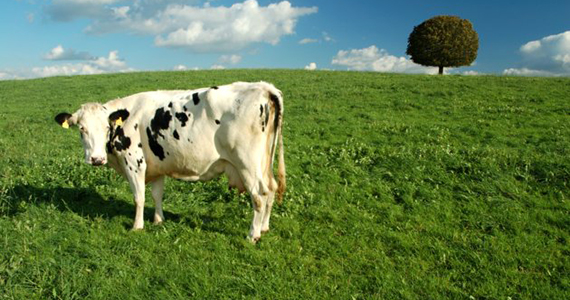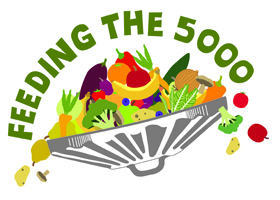Cows On Grass
Author | Simon Bryant
Grain fed beef is one of the most successful marketing stories in the food industry. There is simply not enough space in this article to begin a dissertation on how this happened so put a few keywords in Google and get reading; (cheap US corn prices, faster growing cattle, marbled beef, higher yielding land density stocking rates, marketing companies).
Opponents to grain fed beef will cite USA outbreaks of E. coli O157:H7 which is linked (but not exclusively due) to high density feed lotting and the subsequent effect of cattle standing in their own effluent. The reaction by industry to this problem has been traditionally to use ammonium hydroxide to treat the meat.
Antibiotics and growth hormones are used to expedite growth rates of the animal. Imbalance in the meat’s omega 6 (bad) and omega 3 (good) fatty acids is a result of prolonged use of grains, (particularly corn and soy) and their effect on ruminants’ (i.e. cows in this case) digestive systems, including a lack of fibre in grains that can cause cattle to lick each other and cause rumen abscesses.
It all sounds pretty scary but in my opinion, from both an animal welfare and health point of view, in Australia the raising of beef cattle along with our chooks and pigs (live exports and unethical dispatch methods aside) has managed to travel through the post war period of industrialized agriculture in a less worrisome way than both our overseas counterparts.
There are some exceptionally good “best practice” grain finished beef operations which run very low numbers of both days in lots and densities, especially in South Australia which are run with complete integrity.
If you do decide to try some 100% pasture raised or grass fed (the terms are interchangeable but don’t be fooled by the term “free range” as it is a little deceptive in this context; the cattle could still be fed grain while they are on pasture) you won’t have trouble finding it. Both flavor and texture are completely different to grain fed beef. We are so used to marbled beef (a result of grain feeding) that many people are quite shocked when they first come across grass fed beef, especially some of the “prime cuts” like fillet or striploin. It’s really just a matter of technique when you cook. I have used grass fed beef products for a number of years on menus with spectacular results. There is no doubt the flavour is unique to each farmer’s pasture and working with these robust differences is a pleasure for a chef.
Bob Heath, a stud cattle breeder turned beef farmer, raises his Najobe Park Red Angus near Wistow in the Adelaide Hills. He attributes his meat quality to a number of factors: absolute low stress and humane management techniques are the cornerstones. He uses no dogs, horses or helicopters for mustering. Testament to this approach comes when calving begins and Bob is able to move amongst livestock and pick up, tag and weigh calves with no more than a gentle nuzzle and moo from the mothers. Familiarity with humans and calmness make the dispatch process less stressful for his livestock. In addition the cows are driven in a small fully enclosed trailer less than 12kms, and within two hours of leaving his property the cows are “on hooks”. This is hugely important because travel, unfamiliarity with humans and final destination yarding time are major stresses on livestock. The result is no “dark cutters” (stressed cows produce a dark meat that is the result of pH changes in muscle and can make the meat tough); and a sense of pride whenever one of his Willunga or Adelaide Showground Farmers Market customers return for more.
Bob and son Ben say that many customers are asking questions about traceability. All of Bob’s cattle come from one of 12-14 separate farms in the area. Density ratios? Well, one cow per 4 acres is not exactly high density and yes they are 100% pasture raised as Bob believes that cows should eat grass and that grain feeding produces a more watery final cut of meat.
Down at the Henley Organic and Sustainable Market you will find Madeleine and Liam Burns of Burns’ Biodynamic Beef (Triple B) who raise cattle on two separate farms on the east side of Lake Alexandrina. It is an amazing and tranquil place to be; the cows are calm and allow Liam within a couple of feet when walking his land which is run to certified biodynamic principles. The cows are low density cell grazed through 18 different paddocks over 10 week rotations to ensure pastures are lush and to allow cow pats to break down with dung beetle action, thus lessening livestock worm burden.
Calves are left with their mothers until 8-9 months of age and are calm and stress free. Testament to the system’s effectiveness is the visual condition of the cows (stunning) and a complete lack of drenching (which can be stressful to livestock). Instead the cows get apple cider vinegar, garlic, pepitas and molasses to control the nominal levels of worms and lice.
It is a method of looking after the land that Liam says has spilled over into their whole lives since Liam attended a BD (Biodynamic) workshop run by the Spranz family in 2003. They adopted BD principles after questioning the effectiveness of “traditional farming methods” with chemicals.
The raising of the Burns’ Black Angus cattle all starts below the ground by feeding microbes in the soil, which then feed the grasses and in turn the cows. It’s basically “old fashioned” farming whereby if you look after the land it will look after you. And as for dispatching the cows, well, they are looked after very well with a short run in a dedicated truck (this is part of BD certification) and again NO holding pens at a small local abattoir run by two brothers, to minimize stress.
Triple B customers tend to sell the beef as the word of mouth about the sensational flavours spreads pretty quickly. Madeleine is also keen to educate market punters on how to cook some of the less “fashionable cuts” by way of tried and tested home cooked recipe cards. The price of prime cuts really isn’t dear because of the lack of the middle man, but the secondary cuts are constantly on my own menus – not just because they are cheap – but because that’s where the big flavour is.




